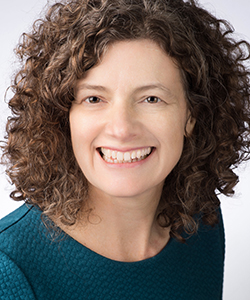From The Editor
Don’t be fooled by the red herring — look for more evidence to solve the mystery
By Tracy Crow
August 2012
Vol. 33 No. 4
You’ve settled in for a Law & Order rerun, and by 22 minutes after the hour, a murder suspect is in custody. The victim’s family, the police, and the prosecutor are all secure in the knowledge that the criminal is behind bars, mystery solved. A simple glance at the clock tells the viewer that’s not the whole story, and, true to form, additional evidence emerges over the course of the case to reveal the full story of the murder. The medical drama House followed a similar model. A patient is admitted to the hospital with a mysterious condition and an interesting backstory. The doctors look at the first set of evidence in front of them and pursue a course of treatment, only to find that they need more data to solve the case. An inquiry-oriented crew, they don’t stop until they understand the root causes of the illness.
Fans of mysteries everywhere recognize the concept of the red herring, a misleading clue that leads investigators down the wrong path. While the narrative function of the red herring is typically enjoyable to readers, the red herring is a dangerous distraction in real life. As educators look at student learning challenges to address them through their own learning, they need to examine a full spectrum of evidence. Grabbing on to what seems to be the obvious answer and using that information to make changes in practice may have educators arresting the wrong suspect while the real culprit continues to create havoc.
Many school districts are working to create educator evaluation systems that use multiple types and sources of data to understand the impact of educator performance on student learning. Those who engage in, plan, design, facilitate, and provide resources for professional learning need to take a similar tactic. They must look at multiple sources of data to create meaningful professional learning and then understand its impact on educator practices and student learning.
The many kinds of data involved in implementing the Data standard at a deep level include qualitative and quantitative data, common formative and summative assessments, observations, portfolios, performance metrics, work samples, and many others. And that array of data on its own is just information. Without careful attention to analysis and ongoing use, the data are just unexamined clues that don’t add up to a solution.
In this issue of JSD, learn with practitioners about how they use data to inform professional learning. Teachers all over the country are finding ways to structure and analyze assessments to understand what their students have learned, and this issue includes rich examples of such inquiry-oriented educators. Thomas Guskey (p. 40) explores what makes evidence meaningful to stakeholders involved in school improvement and urges educators to always start with desired outcomes in planning. Anne Conzemius (p. 20) outlines different uses for data. Many writers stress the role of learning about data use as a key step. Stephanie Hirsh (p. 68) closes the issue with a call to create and embrace common definitions of acceptable evidence of impact along with widely used systems of data analysis.
In other words, these writers tell us, don’t overlook any of the clues, pay attention to every witness, and don’t be fooled by circumstantial evidence. The real story needs to unfold.

Tracy Crow served as chief strategy officer for Learning Forward.
Recent Issues
EVALUATING PROFESSIONAL LEARNING
February 2024
How do you know your professional learning is working? This issue digs...
TAKING THE NEXT STEP
December 2023
Professional learning can open up new roles and challenges and help...
REACHING ALL LEARNERS
October 2023
Both special education and general education teachers need support to help...
THE TIME DILEMMA
August 2023
Prioritizing professional learning time is an investment in educators and...








